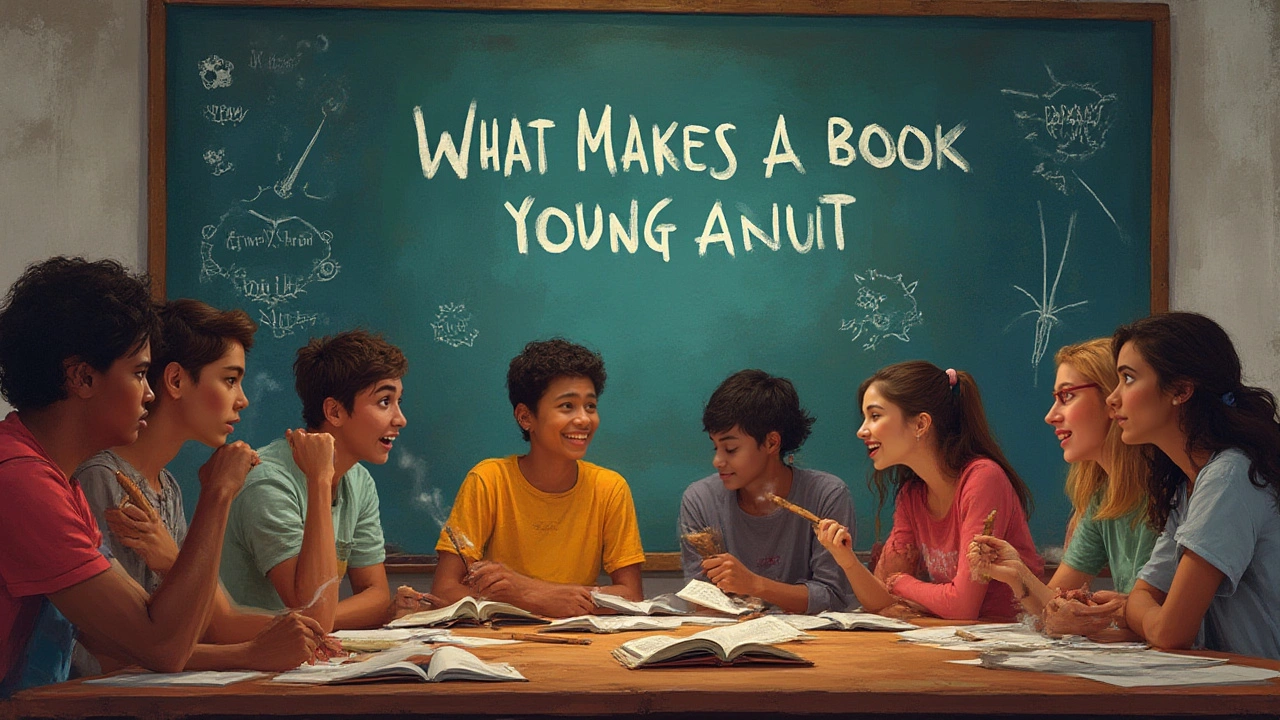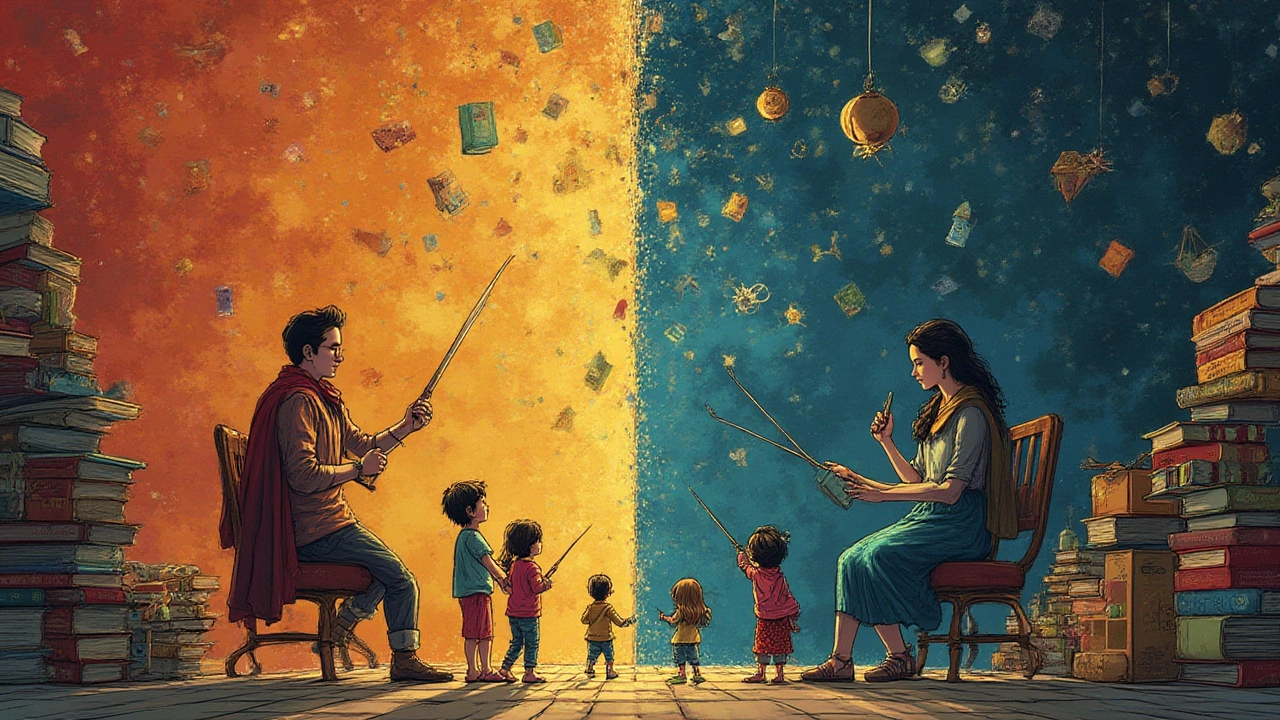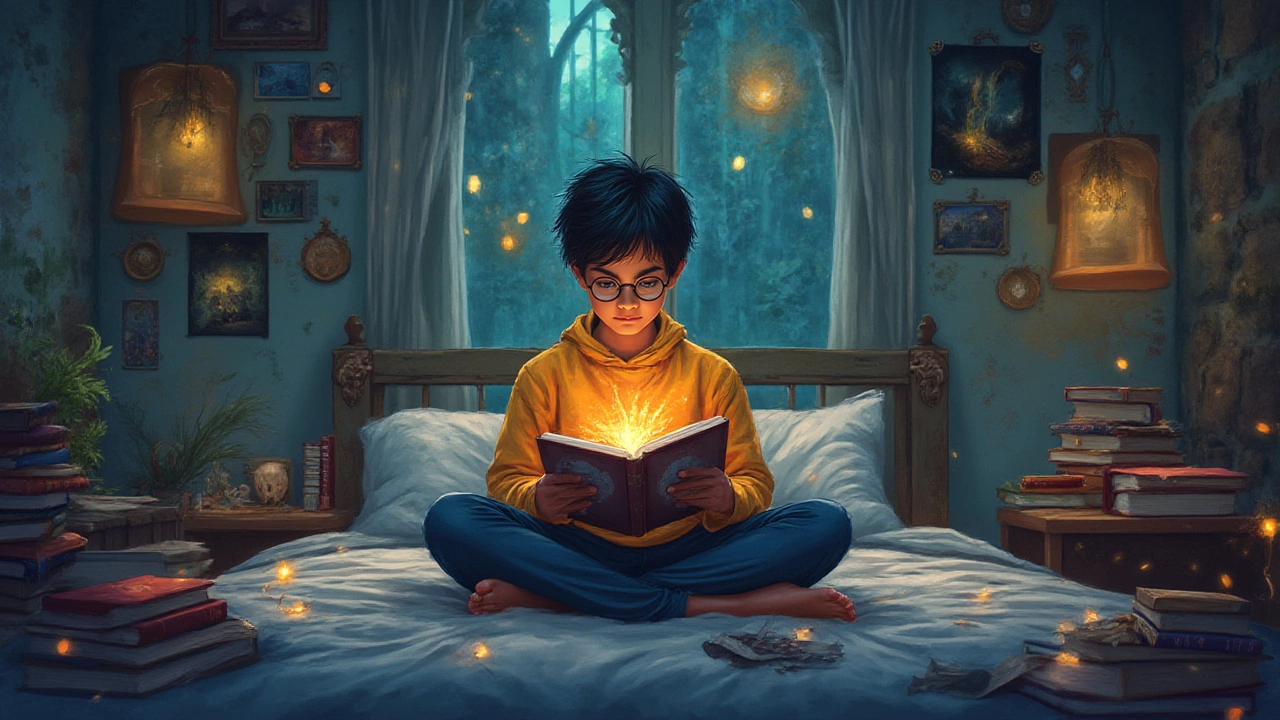Could a book be both a bedtime story and a mirror for teenage angst? Harry Potter has always confused people about its true home on the bookstore shelf. Parents grab it for their kids, but college students clutch battered copies like emotional support pets. Where exactly does Harry Potter fit in—kid's fiction, young adult, fantasy, or all three? For a story that sparked midnight book launches and got banned by angry school boards, its label feels surprisingly slippery. Some see it as a gateway into reading, others as a dark, clever coming-of-age tale, and a few just think, "Hey, it’s about wizards and chocolate frogs, why worry?" Still, booksellers, educators, and longtime fans keep asking: Is Harry Potter *really* a young adult series?
The Age Factor: Who Was Harry Potter Written For?
Let’s talk about the most obvious clue first—the age of the main character. Harry, as we meet him in "The Philosopher’s Stone" (or "Sorcerer’s Stone" in the U.S.), is just eleven. He’s about as clueless about Hogwarts as a kid reading the first book. Rowling said she modeled Hogwarts’ year structure after a typical British secondary school experience, which generally starts at age eleven—right when Harry meets Hagrid and discovers he’s a wizard.
Book one is cleverly written for younger kids, with pretty simple words, big sense of adventure, and only a touch of danger. The evil is scary, but not traumatizing. Yet, each book jumps a year forward in Harry’s life, and things get darker, faster than most parents expect. By "Goblet of Fire," Harry is fourteen and dealing with betrayal, his first crush (awwwkward), and literal death. Suddenly, there’s torture, trauma, PTSD, and characters that *die—permanently*. The last book, "Deathly Hallows," has brutal losses, spiritual themes, and more psychological pain than daytime soap operas. If you follow along as Harry ages, you're growing up, too. Publishers noticed this arc and began marketing the later books as much to teens as to kids. Sales data backs this up: Nielsen BookScan revealed the greatest age group buying new Harry Potter books during the release years was actually teens (13-18) and college-aged adults—not just tweens or preteens.
This shifting target audience sparked debates. Is the series for children who want to grow up alongside Harry? Or is it for teens who are more prepared for dark themes? Bookstores usually stick Harry Potter in the middle grade section for volumes 1-3, but shift the later ones to YA shelves. The publisher Bloomsbury itself released two covers for most books: one with a whimsical look for kids and another with mature artwork for adults who want to read barefaced on the subway. Smart move, right?
What Makes a Book 'Young Adult' Anyway?
The term "young adult," or YA, trips up even seasoned librarians. Officially, YA means ages 12 to 18, but in real-world practice, YA covers anyone who’s not a little kid and not fully adult—so, an awfully wide net. There isn’t a global rule book, either. U.S. publishers might include darker and more mature content under YA (think gun violence or sex scenes in some bestsellers), while the UK is often more conservative. YA is less about the author's intention, more about story focus: coming-of-age plots, characters facing teenage problems, and themes of identity, rebellion, and moral choices.
Here’s a practical example: "The Hunger Games" and "Divergent" are straight-up YA. They show teens fighting a corrupt system, awakening to love, and questioning adults’ mistakes. Harry Potter checks a lot of those boxes: he argues with authorities, chafes against rules, falls in love clumsily, and literally fights for a better world. But there’s a twist—most early Harry Potter readers are younger than typical YA fans. The series is unusual because it starts as middle grade—a label used for ages 8-12—then levels up to YA. Rowling has said she wrote the books so a child could grow up with Harry, making the genre shift intentional.
Curious fact: J.K. Rowling didn’t originally pitch her story as YA. Scholastic and Bloomsbury both banked on kids under 13 being the main market. Only when readers who started the series young hit their teens did the books get ‘promoted’ to YA status. This crossover success is rare—book series like Percy Jackson, Artemis Fowl, or Narnia usually stay firmly in the children’s camp. Harry Potter is one of the only ones that comfortably bridges the line, and that is why the debate keeps swirling.
To understand where it fits, here’s a quick table breaking down some criteria from the American Library Association, comparing Harry Potter to classic YA and middle-grade staples:
| Criteria | Middle Grade | Young Adult | Harry Potter |
|---|---|---|---|
| Protagonist Age | 8-12 | 12-18 | 11-17 |
| Language Complexity | Simple | More mature | Increases later on |
| Violence/Mature Themes | Low to mild | Can be intense | Mild to very dark |
| Romance Elements | Minimal | Frequent/crucial | Emerges, then deepens |
| Theme Focus | Friendship, family | Identity, independence | Both themes |

Thematic Depth: How Dark Is Too Dark?
It’s easy to remember the floating candles, house elves, and talking portraits, but Harry Potter isn’t as light as Butterbeer. Books like "Order of the Phoenix" get genuinely grim; Harry copes with loss, depression, and how the world doesn’t always reward the good guy. Some parents called for bans—especially in the American South and Midwest—mainly due to the series’ portrayal of magic and increasingly dark turns. The American Library Association tracked more than 6,000 complaints between 2000 and 2010, and Harry Potter routinely made the annual Top 10 Most Challenged Books list. Usually, parents weren’t upset by magic; they worried about the trauma, death, and complex moral choices.
By book five, Harry battles not just Lord Voldemort, but also his own anger and frustration. The Ministry of Magic becomes an obstacle, Dolore Umbridge represents hypocritical authority, and Dumbledore—the kindly mentor—admits some horrifying mistakes. These aren’t things you find in your average Roald Dahl story. Neville deals with the fallout of his parents' torture, Luna is bullied for her beliefs, and Snape’s entire career is built on trauma and regret. Facing grief, loss, and the blurry line between good and evil? Classic YA material, with a twist of British boarding school glitter.
Adults can relate to the pain, but teens connect to how Harry’s problems feel close to home: betrayal by friends, school politics, learning that life isn’t fair. Some chapters are so heavy that many fans advise younger siblings or kids to wait before reading the last three volumes—a unique situation for a “children’s series.” If you’re a parent, here’s a tip: read along with your kids and talk about the hard stuff. Spoiler talk—especially about Dobby and Fred—can get emotional. Maybe skip the last couple chapters of "Half-Blood Prince" for anyone under ten unless you want a major crying-on-the-stairs session.
On the flip side, scholars see Harry Potter as an entry point to grappling with hefty themes. Teen readers get to test out moral decisions vicariously, long before facing choices in real life. Plus, research from the University of Cambridge found that teens who read Harry Potter showed better empathy for marginalized groups. Heavy, but hopeful.
Marketing and Cultural Impact: Who Bought Harry Potter?
If you came of age in the late 1990s or 2000s, there’s a good chance you waited for a midnight release, stood in line wearing round glasses, or maybe just devoured all seven books in a mad summer binge. Publishers noticed this devotion—not from little kids, but mostly from teenagers and twentysomethings. Harry Potter was the first series since Frank Herbert’s Dune to build massive multi-generational hype.
Weirdly, the original print runs for "Philosopher’s Stone" were tiny—it had fewer than 500 copies in the UK first edition. By "Goblet of Fire," over 5 million books shipped in one day for the U.S. market alone. The series was translated into more than 80 languages, and global sales hit 500 million copies as of early 2024. The audience wasn’t just kids; adults and teens made up a giant chunk. Nielsen BookScan estimated that at the franchise's peak, around 55% of buyers were over 14 years old, disproving the idea that Harry Potter was just for schoolchildren.
This trade crossover even helped reshape bookstores. Before Pottermania, YA sections were tiny and hidden. After Harry, teens got a whole new shelf space, with more gritty, complex books written for older readers. Marketing gurus started targeting "crossover" books—stories that hooked readers from tweens to college seniors. Here’s a tip: Not sure if a book is middle grade or YA? Check the cover art, the blurbs, and if there are heavy romance or torture scenes, it’s probably YA. And Harry Potter made that wild mix seem normal.
Another fun fact: when Bloomsbury realized so many adults were buying the books, they printed special "adult" covers—muted, artsy, and with zero cartoonish figures. The sales experiment worked. Suddenly, adults reading “kids’” books on the subway could avoid side-eyes. The marketing world went nuts, and other publishers followed suit. The cultural impact didn’t stop at books: movies embraced the darker tone, too, swapping bright candy colors for stormy blues and subway grays after the first two films. Potter, in a way, rewrote the rules of who could read YA—and made it fashionable for adults to want in on the magic.
An often-overlooked stat: the rise of fan fiction. Archive of Our Own listed Harry Potter as its largest fandom, with 700,000+ works as of summer 2025. Much of that fanfic blurs genre lines further, mixing romance, action, and mature themes, reinforcing the idea that the Hogwarts crew means something special to all ages, not just preteens.

So…Is Harry Potter Young Adult or Something Else?
So after all the charts, stats, and literary nitpicking, here’s what you’re really asking: does calling Harry Potter YA matter? For publishing houses and bookstores, labels help with sales and shelving. For parents and teachers, they help decide when to hand the book over. But for the average reader? Most grab Harry Potter for one thing: the adventure, the humor, or just the chance to see themselves reflected in a magic mirror.
From an industry angle, the answer’s somewhere in the messy middle. Technically, Harry Potter starts in middle grade but ends as YA. The language, plot, and emotion all grow up alongside the reader. By book seven, Harry is 17, facing love, war, loss, and his own identity—everything YA thrives on. That means, if you’re splitting hairs, Harry Potter straddles both genres. It launched new trends, with editors in the 2010s even using the phrase "the Harry Potter effect" to justify longer, smarter, or darker books for young audiences.
If you ask Rowling, she usually dodges the label debate: she wrote what she wanted, and the audience followed. Wondering what to tell your kids? Here’s my best advice: if they’re younger than 10, read the first few books and see how they react. Once they hit the teen years, all bets are off. Plan for book discussions, midnight debates, and maybe the occasional tearful page-turner. If you’re old enough for Hogwarts letters, or just old enough to wish you got one, the magic’s still there.
Is Harry Potter a *young adult* classic? Pretty much, yes—with a kid-friendly entry and a dark, gripping finale. Just don’t let anyone tell you you’re too old, or too young, to go back to Hogwarts. That common room is big enough for all of us.

